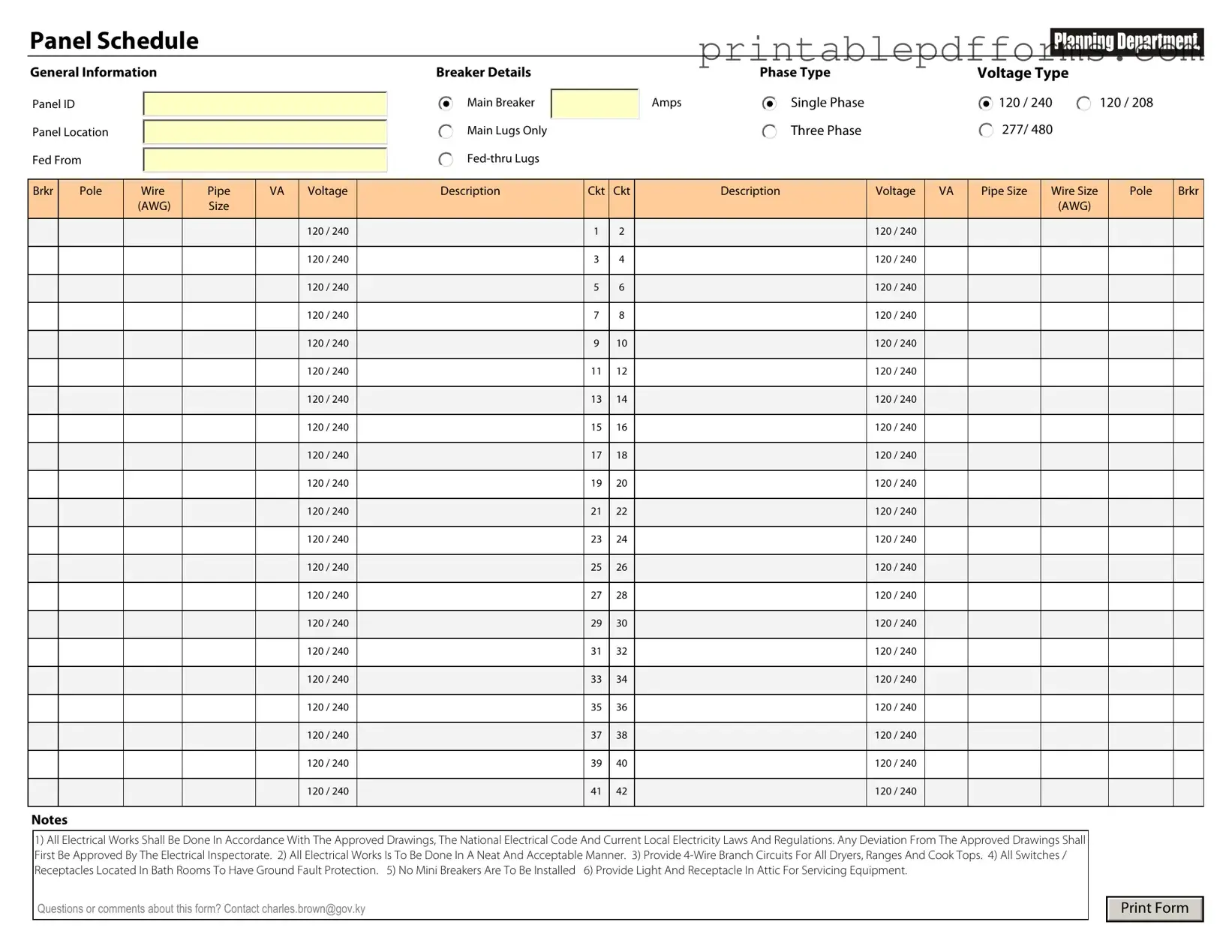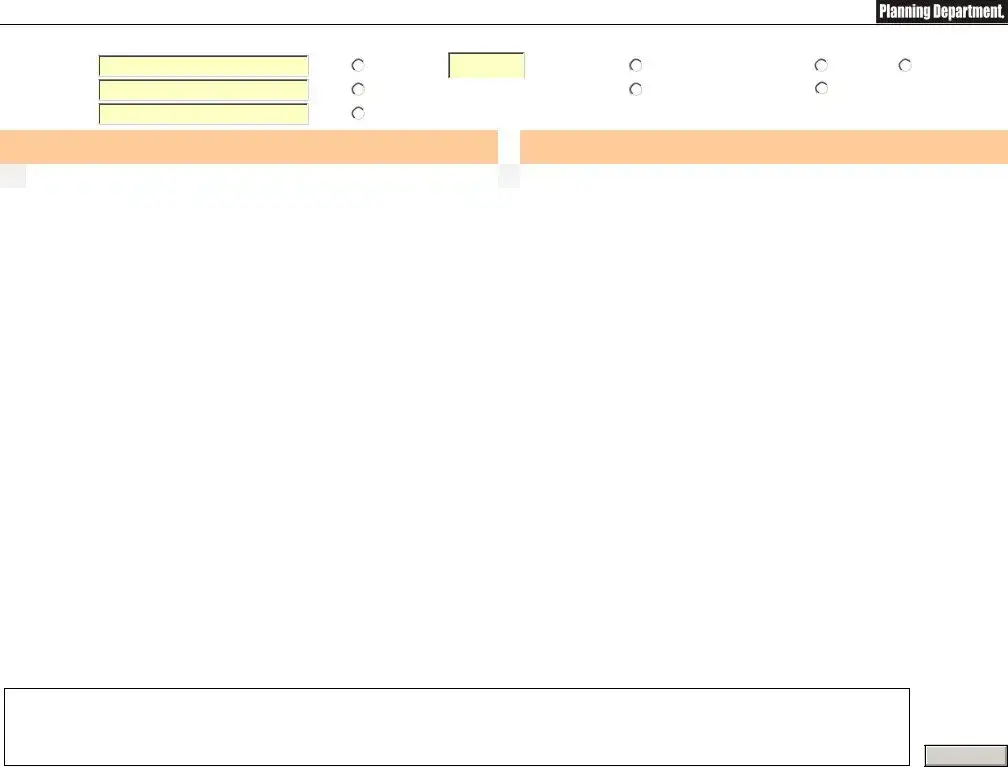The Electrical Panel Schedule form plays a crucial role in the management and organization of electrical systems within residential, commercial, and industrial settings. This form provides a detailed overview of the electrical panel, including the identification of circuits, their corresponding loads, and the amperage ratings. It serves as a valuable tool for electricians and facility managers, enabling them to efficiently track and manage the distribution of electrical power throughout a building. By listing essential information such as circuit numbers, breaker sizes, and the specific areas or equipment each circuit serves, the form aids in ensuring compliance with safety standards and facilitates troubleshooting during maintenance or emergency situations. Additionally, the Electrical Panel Schedule form can assist in planning for future electrical needs by highlighting available capacity and potential upgrades. Understanding how to properly fill out and utilize this form is vital for anyone involved in electrical work, as it promotes safety, efficiency, and clarity in electrical system management.

